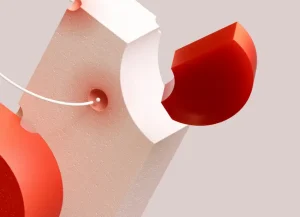Why Safety Matters in Commercial Roofing
Safety in commercial roofing installations is about more than just avoiding accidents. It ensures:- Worker Protection: Roofing work involves heights, tools, and heavy materials, making safety precautions necessary to avoid injuries.
- Property Preservation: Proper practices prevent accidental damage to the building and surrounding areas.
- Project Efficiency: A safe worksite allows the team to work smoothly without disruptions caused by preventable accidents.

1. Conduct a Comprehensive Safety Assessment
Before any commercial roofing project begins, a thorough inspection and risk assessment should be conducted. This includes:- Identifying potential hazards like weak structures or weather conditions.
- Checking for electrical lines, nearby obstacles, or unsafe surfaces.
- Creating a safety plan tailored to the specific site.
2. Use High-Quality Safety Gear
Proper personal protective equipment (PPE) is vital for everyone on-site. This includes:- Hard hats to prevent head injuries.
- Non-slip boots for safe movement on surfaces.
- Harnesses and fall arrest systems when working at heights.
3. Install and Maintain Fall Protection Systems
Falls are among the most common risks in commercial roofing projects. To mitigate this, safety measures should include:- Guardrails installed around the edges of the roof.
- Secure anchor points for safety harnesses.
- Warning lines to mark hazardous areas.
4. Monitor Weather Conditions
Weather plays a significant role in the safety of commercial roofing installations. Rain, snow, or strong winds can make roofing surfaces slippery and dangerous.- Always check the forecast before scheduling work.
- Avoid working in extreme weather conditions.
- Use caution on hot days, ensuring workers stay hydrated and protected from heat-related illnesses.
5. Maintain a Clean and Organized Worksite
A cluttered worksite increases the risk of accidents. Tools, materials, and debris should be organized and stored safely. Some tips include:- Using clearly marked areas for storage and waste disposal.
- Keeping pathways clear for easy movement.
- Regularly cleaning the site during and after work.
6. Provide Comprehensive Training
Every worker involved in a commercial roofing service should receive proper training. This includes:- Recognizing potential hazards and responding appropriately.
- Using tools, equipment, and safety systems correctly.
- Understanding emergency procedures.
7. Secure Tools and Equipment
Loose tools and equipment pose a significant risk during roofing installations. To prevent accidents:- Always secure tools when not in use.
- Use tool lanyards to prevent them from falling.
- Regularly inspect equipment for wear or damage.
8. Ensure Proper Material Handling
Roofing materials like shingles, metal sheets, or insulation can be heavy and awkward to handle. To avoid injuries:- Use mechanical lifts or cranes when possible.
- Train workers on safe lifting techniques.
- Distribute materials evenly to avoid overloading sections of the roof.
9. Establish Clear Communication
Effective communication on-site is critical for preventing accidents. Workers should:- Use hand signals or radios when visibility is limited.
- Be briefed on daily tasks and potential risks.
- Report any safety concerns immediately.
10. Conduct Regular Safety Inspections
Safety is an ongoing process, not a one-time task. Regular inspections ensure that all measures remain effective. This involves:- Checking fall protection systems and PPE daily.
- Monitoring the condition of the roof and worksite.
- Addressing new risks as they arise.

